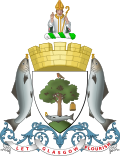History
The present Buchanan bus station opened in 1977. Prior to this date Scottish Bus Group services terminating on the north side of the city centre had used two smaller bus stations known as Killermont Street (also known as Buchanan Street) and Dundas Street Bus Stations, as well as on-street stances on adjacent streets. These facilities were very congested, although the situation was alleviated somewhat in the 1960s by the creation of overspill bus parking between the two stations following demolition of the block of buildings on the corner of Parliamentary Road and Killermont Street. That was only a temporary arrangement, as the demolition presaged the comprehensive redevelopment of this part of the city in the 1970s, sweeping away the original buildings and street layouts. As part of this redevelopment, the new Buchanan Bus Station was built to the east of the previous facilities, on land which had formerly been occupied by the north side of Parliamentary Road and part of the goods depot of the former Buchanan Street railway station, which had closed in the 1960s under the Beeching Axe. The new bus station was initially accessed to the south from the intersection of Parliamentary Road and North Hanover Street, but in the 1980s the former was realigned in an approximate east-west axis in order to create space for the Glasgow Royal Concert Hall (and the future Buchanan Galleries shopping mall), and was renamed as Killermont Street - the original street of that name having been the northern continuation of Dundas Street - but this was now built over by an adjoining multi-storey car park as part of the bus station development.
When it first opened Buchanan Street was the Glasgow terminus of all Alexander (Midland), Alexander (Fife), Alexander (Northern) and Highland Omnibuses services into the city, together with some Scottish Omnibuses and Central SMT routes. Long-distance coaches operated by Western SMT and National Express also used the station from the outset. The other SBG bus station in the city at that time was Anderston Bus Station which was used by all Western SMT local services and by the balance of Central SMT and Scottish Omnibuses routes. These arrangements perpetuated the longstanding situation whereby SBG services would terminate on the edge of the city centre rather than penetrating into it, requiring passengers who wished to cross the city centre to change to a Greater Glasgow PTE service. This protected the city operator's revenue and supposedly reduced congestion in the heart of the city, but it was not convenient for passengers and following deregulation some routes were altered to better serve the city centre. Most former Western SMT routes (by now operated by Western Scottish and Clydeside Scottish) switched from Anderston to Buchanan, while many SBG services to the city's peripheral housing estates were merged into cross-city routes that did not terminate in either bus station.
Following privatisation of the Scottish Bus Group in 1990–91, ownership of the bus stations passed to Strathclyde Passenger Transport in 1993, and then to its successor Strathclyde Partnership for Transport in 2006. [1] By the early 1990s the competitive 'bus wars' which had broken out after deregulation had largely ended with most of the former SBG companies' suburban routes having been given up and left to Strathclyde Buses, whose services had never used the SBG bus stations. Anderston bus station closed in 1993, resulting in the transfer of some of its remaining services to Buchanan, whilst some other short-distance routes switched to on-street termini as a cost saving measure. Today Buchanan Street is the only bus station in the city, and it is predominantly used by longer-distance and express services.
This page is based on this
Wikipedia article Text is available under the
CC BY-SA 4.0 license; additional terms may apply.
Images, videos and audio are available under their respective licenses.





